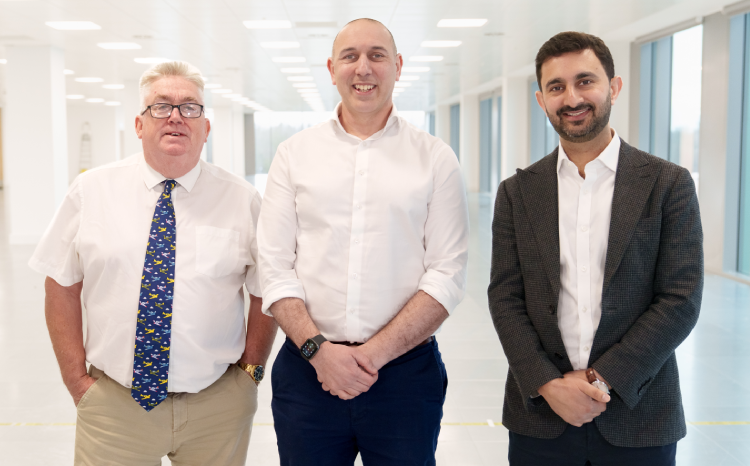Why mobilised data is the most valuable tool in healthcare
- 23 August 2022

As chief clinical Information officer (CCIO) at Wrightington, Wigan and Leigh Teaching Hospitals NHS Foundation Trust, Dr Martin Farrier feels there should be a shift in focus from what is inputted into an EPR system towards what is outputted, such that the information can be mobilised and enable improvements to care practices. Dr Farrier explains why mobilised data is the most valuable tool in healthcare and that this will especially be the case as we work to achieve the plans set out in the Data Saves Lives strategy in an Integrated Care System (ICS) context.
Reflecting on the start of the pandemic, the data we held was collected for a single purpose and could only really be used for that purpose. We did not have the tools to extract data effectively and the data was too often entered in a way that could not be searched. Typically, that was as free text entry. Seeking to alter the way that we collect data can make it transferrable. The journey that data makes is important and its mobility enables it to be more than a single point.
Learning lessons from Covid-19
Covid-19 forced us to design systems that didn’t exist. Whilst they were needed for the recording of care, they were designed with the knowledge that the data generated from the system would be needed to plan services. Once we managed to develop the systems and configure our EPR to help create a database of Covid-19 patients that could be used and updated in real time, we were able to streamline our processes. This helped garner an accurate list of people at a time when this was unique. We could identify all the positive tests, and then cross-check that with the clinical notes and confirm true cases, admissions and outcomes.
The real-world importance of this information reinforced the real value that high-quality, mobilised data can provide. Our EPR helped pull together many data points including survival data, comorbidities and length of stay—which ultimately helped improve the patient experience, and, more importantly, improve outcomes. Monitoring the role of continuous positive airway pressure (CPAP) in the management of respiratory failure associated with Covid-19 is one example of how we used data to quickly identify and prove a potentially viable treatment option for a specific cohort of patients, as explored in the BMJ Open study. We also learned how, globally, this therapy could have significance economically for healthcare provision in under-developed countries.
The journey of Covid-19 data and its movement is possible because of it being transferrable. It was collected because clinicians needed results and records. It exists where they need it, but it can travel. This data can be put together with co-morbidities and with treatments. We can compare all of those to outcomes. When we do that, the power of data is unleashed. No longer is it used to record a choice for an individual, but it becomes the story of the population and the evidence we need to make choices for all. We now have the ability to determine the most appropriate treatments and improve patients’ chances of recovery. It is this evolution of data that raises hope that we are moving in the right direction—especially in the context of the Data Saves Lives policy paper that sets out ambitious plans to harness the potential of data in health and care across the country.
Although the healthcare industry may be lagging behind other industries such as banking or aviation, healthcare is starting to understand the value that technology can offer. Data, that is mobilised and able to be reused, can help relieve the immense pressure on resources, while supporting the need to improve and streamline the patient journey. This is bolstered by a cultural shift that is taking place as more of the workforce appear to be receptive and open minded to embracing digital tools—and I sense this is also linked to recognising the benefits that meaningful and accurate data can provide.
Striving for patient empowerment
Information technology needs to be on a level playing field with physical hospital assets, as you cannot provide care to patients without either. In the future, our health system will not function effectively without suitable IT systems embedded. The patient journey has the potential to be so much more connected with the right IT systems sharing data that can be used for analytical purposes beyond the need for which it was first recorded, but this also requires significant investment.
The paternalistic relationship between doctors and their patients is starting to shift in terms of who is in control of the data, but it has the potential to evolve further so that patients are truly empowered and at the centre of their care. Paternalistic relationships are no longer accepted across many of areas in society, and now, because of this shift in data usage, it is no longer accepted in healthcare.
The EPR should be a data source, not a destination
WWL has been live with Altera Digital Health’s Sunrise EPR since 2016, with the data functionality being transformed in recent years. Being the single provider for the area under one local authority with 350,000 patients, and an integration with the Greater Manchester Care Record, the trust is well positioned to operate smoothly in the ICS context. An agile way of working has enabled us to adapt to new standards, and really make the most of the data we are capturing. The EPR provides a treasure trove of data, but just collecting and storing it shouldn’t be the extent of ambitions for digitally enabled healthcare. We must use the data for a greater good, and as a system we need to realise its true potential by sharing positive experiences, while always striving to improve and allowing all stakeholders to recognise the value of working collaboratively. Ultimately, the data from the EPR could serve a larger system that is owned by the patient, and so the EPR would be the data source, rather than the data destination.






6 Comments
Martin, you are right, shared data could massively improve care. But how do you convince the big healthcare corporates who have an unspoken vested interest in not sharing?
The NHS have been promoting sharing for many years with very limited success. What if the NHS just refused to buy from companies not willing to genuinely share appropriate data?
Thanks for a really incisive article.
I think that most clinicians already do – they want to complete audit etc. But, they find that the output tools from EPR aren’t up to much and tend to head toward manual data collection.
Oddly, I think the tipping point is when EPRs are cloud based and AI is able to access and process data. Suddenly there is the capacity to make what is broadly analogue unsearchable data into true digital data. I think the AI robots will also assist the inputting of data in true digital terms to assist the process.
I dont think we are waiting for clinicians.
Great article Martin, fantastic points focusing on the data story pre, during and post pandemic. A question from one clinician to another…how far are we from the tipping point regarding the acceptance (by the majority of clinical staff) of tools such as EPR’s in being seen as a data source or collection tool rather than the destination?
I think that most clinicians already do – they want to complete audit etc. But, they find that the output tools from EPR aren’t up to much and tend to head toward manual data collection.
Oddly, I think the tipping point is when EPRs are cloud based and AI is able to access and process data. Suddenly there is the capacity to make what is broadly analogue unsearchable data into true digital data. I think the AI robots will also assist the inputting of data in true digital terms to assist the process.
I dont think we are waiting for clinicians.
Nottingham University Hospitals and PA Consulting have taken the mobilisation of data a step further, using retrospective and real-time data from Nervecentre and prospective analytics to predict the length of stay for all patients at the point of their admission, accurately forecasting bed usage weeks in advance https://www.paconsulting.com/newsroom/expert-opinion/health-management-digital-twin-technologies-shortening-waiting-lists-and-reducing-inefficiencies-8-july-2022/
Nice use of data. The potential uses are almost endless. However, we need to get good at what works.
For us, the prediction of how long a patient will stay in hospital hasn’t been effective in terms of changing outcomes. The difficulty for us has been that the prediction of the future is based merely on the past. It worked well for A/E attendances, less well for ward discharges. If we dont flex our services to change the future, then predicting it didnt help us.
Comments are closed.